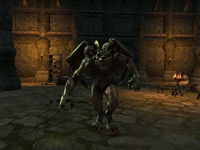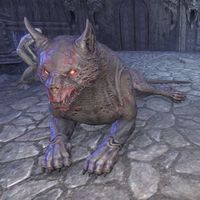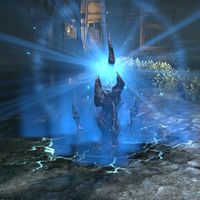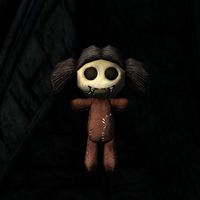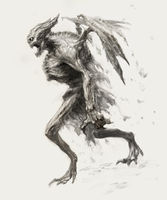Lore:Vampire
A vampire is a preternatural being, commonly believed to be a reanimated corpse, which consumes the blood of living creatures. The vampires of Tamriel are undead, diseased persons who are hated, hunted, and misunderstood by the living.[1] Whether they consider themselves cursed or blessed, or whether they have given into their animalistic instincts or have sought to rid the world of the disease, vampires are nonetheless considered abominations.[1][2]
Though it's possible for a vampire to find a cure, knowledge of how to do so has been suppressed in many places due to the fear that it would encourage people to deliberately infect themselves. Imperial culture views vampires as destructive monsters to be hunted and destroyed. Romantic notions of noble, virtuous vampires persisted in Imperial traditions through the Third Era, and vampires were thought to pass unrecognized in the Mages Guild and the Imperial aristocracy.[3] Other names for vampires include blood vampire,[3] vampyre,[4][5] thirster,[6] scion of Bal,[7] and nosferatu.[5]
Vampires are classified as the accursed undead, as their undead status arises from the curse of vampirism as opposed to a necromancer's manipulation of the buried dead.[8] While some vampires claim to have a heartbeat,[9] others have claimed that their heartbeats ceased after contracting vampirism.[10] While vampires' capabilities often include incredible speed, advanced mystical talent, and unnatural strength, their ability to spread the infection to others—a fate often described as worse than death—is among the most frightening.[1] Vampires have also been shown to be able to turn into bats.[11] Some vampires have expressed a need to breathe, having to actively hold their breath when necessary,[12] but others attest that their breathing stops after being afflicted.[13]
Distrust and chaos can potentially bring down entire settlements should just one vampire infiltrate the populace.[14] Persistent myths claim that vampires are weak to garlic, but they are untrue.[15] To date, only one vampire has ever been harmed by garlic due to a preexisting allergy.[16] This was a wholly unique phenomenon, and all other attempts to combat a vampire with garlic will inevitably end in disaster.[17]
Vampires spread their affliction by giving mortals diseases such as Porphyric Hemophilia, Sanguinare Vampiris, and Noxiphilic Sanguivoria.[18][19] Infections are caused by being bitten or scratched by a vampire.[19][1][20] Sanguinare Vampiris and Porphyric Hemophilia both have a three-day incubation period, in which the infected will become a vampire after the allotted time has passed. These diseases can be cured as any other disease could before the three-day period has passed.[19] Vampires infected by either of those two strains are weakened by the sunlight.[21][22][23]
Vampires tend to be organized into many different clans or covens; in fact, there are over a hundred distinct varieties of vampire in Tamriel.[1] Some creatures are often found near vampire lairs. Examples include death hounds and gargoyles, which can often be found guarding vampire lairs.[24][25]
Characteristics[edit]
The most defining characteristic of vampires is their unnatural, insatiable need for blood. Blood may not be needed to stay "alive", but doing without it can cause a vampire to become extremely weak and rabid, though some types of vampires will instead become stronger. However, they will still turn rabid after going too long without blood,[26][27] and in some cases, can fall into a coma.[28]
Consuming blood also allows vampires of some bloodlines to maintain a more inconspicuous appearance, dulling their vampiric qualities. If a vampire's bite leaves its victim alive after a feeding, the vampire risks passing its disease to the victim.[1] A mortal's blood may not be needed to keep a vampire healthy; it is suggested that vampires are able to drain any warmblooded creature's blood instead.[26] Many vampire clans have their own unique methods or traditions when it comes to feeding. Sometimes victims suffer a fate worse than death, such as being kept as thralls to be fed on continuously by their captors.[29][30]
Vampires are capable of eating mortal food, but won't derive the sustenance they need from it. They can still become intoxicated by partaking in alcoholic beverages.[31]
A writer's experiments in the hybridization of a plant and vampiric blood led to the spawning of plants with a voracious hunger for blood, similar to that of a vampire. The aforementioned plants would die when exposed to sunlight.[32]
Vampires look distinctly different from unaffected persons;[1] their faces are unusually pale, and the eyes of some breeds of hungry vampires turn blood-red until their thirst is sated.[33] Vampires have fangs; some vampires have two fangs on their upper incisors, while other vampires have four fangs, one for each incisor tooth.[34] Vampires are unable to age and are immune to disease.[5] Though they are impervious to death by old age, vampires may be killed by the hand of another.[35] "Ancients" are the oldest vampires, which may be hundreds or even thousands of years old.[36]
Vampirism is contracted through any sort of wound inflicted by a vampire.[1] The diseases that cause vampirism are transmitted through the disease-contaminated blood of a vampire.[3] Vampires have been known to infect their victims through bites, scratches or by casting a spell to drain their prey's vitality.[19][1][20] Some newly-infected vampires will exhibit no symptoms for the first 72 hours after contracting the disease. Others may experience nightmares and insomnia. The infected can be cured of the disease like any other ailment within that 72 hour period.[39] After that time, however, the disease is said to be "incurable"; the disease causes one to "die", making a vampire literally undead.[1] Despite this, there are many documented cases of individuals who found the means to cure themselves, as discussed further below.
A vampire's skin is extremely susceptible to sunlight, though the degree to which they are affected varies by the specific strain. In some, it is so severe that mere contact with sunlight burns the skin.[26] Most vampires are also especially vulnerable to fire.[26] When they die, their dust can be collected and used as an alchemical ingredient.[40] Documents describe vampires being turned to dust even without being slain by flame.[41] Rumors hold that entering places of worship may cause a vampire pain.[1] Silver is known to be an effective weapon against vampires.[42] The exact abilities and weaknesses a vampire may possess are determined by the bloodline they are a part of or the disease with which they have been infected.[43]
Small amounts of vampire blood can be used to give an injured or dying mortal strength and vitality.[44] Those whose bodies are shutting down due to the presence of poison can have vampire blood administered to them.[44] This will work as a countering agent to the poison.[44] Vampire blood is prized by necromancers and desperate alchemists.[45] Vampiric infection appears to be able to cure or halt the progression of blood-borne diseases, such as Ostraekeratic Fever.[46]
At least one male vampire has been documented to have fathered a child with a living partner.[27] The Journal of the Lord Lovidicus recounts how an Imperial impregnated an Orc woman, resulting in a male Orc child who was named Agronak gro-Malog.[27] This child inherited unnatural fighting abilities, like increased speed and resistances to magical and normal weapons.[47] He also had unnaturally grey skin.[47] He would become known as the Gray Prince, and became Grand Champion of the Imperial City Arena.[47][37]
It's commonly believed that the soul of someone afflicted with vampirism will end up in Coldharbour following their demise.[48][49][12] Others however believe otherwise, that it is not Daedric curses that determine where a soul goes, but instead the choices made by a mortal in life.[50] Another example is the case of the Adoring Admirer. Despite perishing as a vampire, he was capable of remaining on Nirn as a spirit to give a final farewell to the Vestige before passing on, seemingly peacefully, to the afterlife.[51] The Agent also encountered vampires in Aetherius during their quests,[52] though whether these arrived in Aetherius through death or "conventional" means is unknown.
Origins[edit]
—Serana, Vampire Lord of the Volkihar clan

Opusculus Lamae Bal ta Mezzamortie tells of how the curse of vampirism came about, owing its creation to the Daedric Prince Molag Bal.[53] The tale goes that Molag Bal disliked Arkay, an Aedra who showed great pride in his sphere of influence, the cycle of life and death.[53] Molag Bal traveled to Tamriel (still newly-formed at the time), where he savagely raped a Nedic priestess of Arkay named Lamae Beolfag and departed Nirn.[53] Lamae was found and nursed by Nedic nomads, who noticed that her mangled body was affected by some form of corruption.[54] Her wounds began to heal, and the coven attempted to cremate her.[53] On the night of her cremation, she rose from her funeral pyre and brutally murdered the nomads.[53] Lamae's curse spread across Tamriel in one form or another, making a mockery of Arkay's beloved sphere.[53] Since then, many mortals have made pacts with Molag Bal to become vampires, giving rise to new bloodlines.[55]
The beginnings of vampirism have variations in Tribunal Temple doctrine, with Molag Bal spawning the first vampire from a defeated foe, such as a Daedra Lord, a Temple Saint, or a "powerful beast".[2]
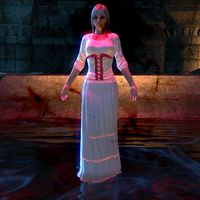
There are variations in belief on the origins of Vampires. Not all can be traced back to Molag Bal, or even Daedric origins, as some stories claim vampires can be created by mortals tinkering with magic. The people of the Iliac Bay region believe vampires are created by either magical artifacts, or the curse of a wizard.[1] Dunmer nationalists in the Third Era held that the scourge of vampirism originated in the west through necromancy, and couldn't possibly be native to Vvardenfell, as the Tribunal Temple did everything in its power to suppress vampires.[3] This point of view may come from Temple propaganda and the Dunmer's cultural hatred of necromancers and foreigners, who they blame for bringing necromancy to their homeland.[56][57] These beliefs may coincide with the common misconceptions about necromancy and vampirism that exist in the minds of the public.[57]
The creation of Vampires happened early on in Tamriel's history. Vampires were present in Summerset as far back as the Merethic Era,[40] some served as assassins in the forces of Abagarlas prior to 1E 198,[58][59][60] and the Nighthollow Clan existed prior to 1E 221.[61][62]
Vampiric infection can be achieved through alchemy. In 2E 582, a member of the Sapiarchs reproduced the effects of Porphyric Hemophilia alchemically, and administered the concoction to a sailor infected with Ostraekeratic Fever.[46][63] The sailor was infected with vampirism and cured of Ostraekeratic Fever.[46] As all vampires do, the sailor experienced a thirst for blood.[64]
Alchemy can also be used to tinker with various bloodlines. An alchemist known as Lady Essenia used azure plasm while experimenting with different bloodlines to create a strain known as Chaotica Vampiris, which begets monstrosities known as Bloodknights.[65] This strain is only infectious to those already afflicted with vampirism.[65] Vampires infected with this condition transform into tall, pale monstrosities and are unable to restrain their more base instincts.[65][66]
Not all bloodlines seem to have a clear or simple origin. There are vampires that were turned by a vampire of one strain and then went on to create their own bloodlines, complete with different traits. It is not known how this occurs as well as whether or not all vampires could do this. For example the vampires Lyrezi, Selenu, and Vraseth were turned by Lamae Bal, who was the progenitor of vampires with Noxiphilic Sanguivoria[67], a breed that is not harmed by sunlight or holy relics. However, bloodlines founded by the aforementioned vampires were harmed by sunlight and holy areas.[68] Considering these completely different traits, it is difficult to speculate on how exactly bloodlines become different from each other.
All Vampiric bloodlines are believed to be tied to Daedric energies. Some have created metaphorical bridges to the Daedric source of vampirism through alchemy, the result being a strain just as potent as Noxiphilic Sanguivoria. Others in some cases have figured out a way to siphon the power of vampirism from another. The result, regardless of origin point, is the same: an undead creature that abhors sunlight and thirsts for blood.[69]
Religion[edit]
Unlike lycanthropes, who tend to gravitate to worshiping Hircine, there are several patrons and deities vampires may worship, or whom they associate with their condition.
Clavicus Vile is worshipped by members of the Cyrodiilic Order.[70] The Order honors Clavicus Vile for giving them the ability to blend in with mortals. They claim that his guidance has allowed them to be act more reasonably upon their cravings.[70]
Molag Bal is the Daedric Prince who created the first vampire, Lamae Bal, as well as the pure-blooded vampires of other bloodlines, and is consequently responsible for their existence. As such, he is commonly worshipped by many vampire clans all across Tamriel.[71] Even mortals who don't worship Molag Bal recognize him as the one responsible for creating the affliction.[72]
Lamae Bal was a Nedic priestess of Arkay who was brutally raped and turned by Molag Bal into the first vampire, being considered an important figure among vampires due to this.[73] She is the progenitor of Noxiphilic Sanguivoria.[74] Lamae eventually founded a cult of vampires, with the core tenets being the hatred for both Arkay and Molag Bal. She considered members her children, and was referred to as Mother Lamae by them.[67][75] She was seemingly also the progenitor of the Lyrezi, Selenu and Vraseth bloodlines, which are named after Nedic tribesmen whom she devoured.[67]
Sangiin the Khajiit Blood God, an aspect of Sanguine is the patron deity of Elsweyr's Hollowfang Clan.[76] He is said to tempt Khajiit into making their flesh immortal, which may imply being given the gift of vampirism.[77][78] They honor Sangiin by drinking blood.[79]
Nocturnal, The Night Mistress, whose sphere is the night and darkness, is favored by many vampires as they bask in the darkness.[UOL 1]
Vampiric Subtypes[edit]
Pure-Blooded Vampires[edit]
Vampires that have been given their gift directly by Molag Bal are known as pure-blooded vampires.[55] Female pure-bloods are called Daughters of Coldharbour.[73] Pure-blooded vampires wield far greater power than the average vampire.[80] Due to their unique nature, pure-bloods enjoy greater status among their kind, and some hold their "half-breed" descendants in low regard.[55] Pure-bloods are a likely source for the various strains of vampire bloodlines, as the varieties of vampirism the Daedric Prince endows varies from individual to individual.[81] The only notable exception to this is the ancient Volkihar clan. Lord Harkon and his wife and daughter were all gifted the same strain.[55]
Aside from their origins, status, and purity, the difference between pure-bloods and their descendants is that pure-blooded vampires are more powerful than those whom they bless. The progeny and grand-progeny of a pure-blooded vampire may retain the abilities granted by their bloodline, but they may not be as powerful as their sire and grandsire.[82] At least two bloodlines demonstrate a difference in abilities between those who are more "pure" and those who are less "pure": those of the Volkihar clan and Lamae Bal herself. The Scions of Lamae's bloodline are blessed directly by Lamae, making them purer than others, and allowing them to transform into vampiric monstrosities known as "Blood Scions".[83]
Vampire Lords[edit]
The monstrous form of those known as Vampire Lords is granted by Molag Bal to a select few ancient bloodlines.[83][55] The pure-bloods of the Volkihar clan are known to wield this power. Several vampires associated with the Gray Host are also known Vampire Lords.[84]
Not just anyone can become a Vampire Lord by being bitten by one. The blood of Vampire Lords is potent; individuals who are strong enough to withstand the power bestowed by a Vampire Lord can become one themselves, and those that are not don't survive the process.[55] Aside from powerful individuals, those who are related to a vampire by blood in some way may be infected by their relative or a vampire who was turned by said relative. That is to say, if a mortal can trace their ancestry back to a Vampire Lord or one of its mortal relatives, they could possibly be turned by the Vampire Lord.[85] For example: If someone were related to Lord Harkon of the Volkihar, they could possibly be turned by Harkon or a vampire he's sired.[85] This process is finicky, and is described as only possible "when the heavens show the correct aspects".[85]
The Vampire Lord is considered a late-stage form of vampirism. As they are inherently shape-shifters, the late-stage form of one bloodline may vary in appearance significantly from that of another bloodline.[UOL 2] One example of this is Majorn, the patriarch of Wittestadr, who possessed the ability to transform into a creature resembling a gargoyle.[86][UOL 2]
Blood Scions[edit]
By using accursed sorcery and blood rites, Lamae altered her bloodline to allow those she sires to transform into a Blood Scion. Initiates must undergo the Rite of the Scion while infected with Noxiphilic Sanguivoria in order to receive this blessing.[83][74] The ritual involves the mortal's blood being fully replaced by that of Lamae Bal's,[87] which turns the initiate into a blood scion, a powerful transformation meant to rival vampire lords.[83] This ritual is the only way for a soul shriven to be infected with this strain of vampirism.[88] Blood Scions grow more powerful the more they feed.[89] They are also able to sense their prey through walls and envelop themselves in a swarm of bats.[90] Some Blood Scions do not experience the aversion to fire that lesser vampires possess.[90]
Bloodknights[edit]
Bloodknights are vampires who have absorbed the power of several other vampires. They are larger, stronger and faster than normal vampires. Bloodknights have a difficult time restraining their more base instincts, giving them a beast-like quality. They usually operate in service to Vampire Lords. Lady Essenia of Greymoor Keep managed to create her own bloodknights by alchemically blending the bloodlines of several vampires, using Azure Plasm as a catalyst. She would then infect vampires with this mixture, infecting her subjects with a strain of vampirism she dubbed Chaotica Vampiris. Unlike Porphyric Hemophilia or Sanguinare Vampiris, Chaotica Vampiris only affects those already inflicted with vampirism.
Bloodfiends[edit]
Bloodfiends are feral vampires. The process of becoming a bloodfiend typically begins when a vampire starves, loses their sanity and turns feral. However, the term "bloodfiend" also refers to other vampiric abominations that do not experience an infection with an incubation period as most vampires do.
Feral vampires are vampires who have lost their minds over the years, until they eventually become deranged with hunger. A vampire can become a feral vampire when they are unable to feed, refuse to feed, or go for long without blood. The most notable example of a vampire that has gone feral in this manner is Lord Lovidicus.
The "blood cursed" are a type of bloodfiend who resemble blood-starved vampires. Unlike traditional vampirism, the infection sets in very quickly, and the process completes in a very short time. What makes these bloodfiends distinct from normal vampires is the fact that potential bloodfiends are not required to be alive for the process to reach completion. Bloodfiends can come about after a victim is drained dry by a vampire. A relic known as the Lightless Remnant was capable of transforming mortals into bloodfiends, and almost unleashed a bloodfiend plague upon Rivenspire before it was given to Molag Bal.
Mortals who have their souls stripped away by a harrowstorm have a chance of being transformed into a vampiric husk known as a harrowfiend: a shriveled up creature of basic instinct and hunger.[91] Harrowstorms were magical storms created for the Gray Host by the Icereach Coven using dark magic and ancient vampiric alchemy. They were utilized in earnest by the Gray Host in 2E 582.[92]
Cures[edit]
The disease is thought to be incurable by the Dunmer of Morrowind.[2] However, a Buoyant Armiger named Galur Rithari claimed that he was cured of the disease. In his papers, the Armiger states that while he was a vampire, he undertook a task from Molag Bal at a shrine, and after the completion of the quest, he was cured of vampirism.[93] Rithari later disavowed his claim due to coercion from the Tribunal Temple.[2] At least one other has successfully sought a cure from Molag Bal, though the Daedric Prince actually acquired the cure from Vaermina.[94] The experience of taking this cure was described as a painful, terrifying dream of being carved by thousands of knives from the inside out.[93]
It's said that at least some forms of vampirism can be cured by eliminating the bloodfather of the applicable bloodline.[95] Finding and eliminating a bloodfather is very difficult, but by doing this, the whole clan of vampires will also be cured, with some dying instantly as a result of their old age.[96] Another report from a supposedly cured vampire also suggests that curing the disease is possible, although it gives no clues as to how.[26] One method to cure the disease involves bathing in water containing a mysterious ingredient known as Purgeblood Salts.[41]
The witches of the Iliac Bay caught the attention of the Mages Guild by apparently curing the disease. Their cure is a potion consisting of six cloves of garlic, two shoots of bloodgrass, five leaves of nightshade, the blood of an Argonian, and the ashes of a powerful vampire. These same ingredients were used to cure Count Skingrad's comatose wife, Rona Hassildor, of her vampirism, though the process of being cured resulted in her immediate death.[97] Troll fat is also reputed to be capable of curing vampirism.[98] One method for combating the spread of vampirism, now lost to history, was a potion which turned the drinker's blood into a powerful poison capable of killing vampires that attempted to feast on them.[40] There are tales, the veracity of which can't be determined, that there are other, more mystical ways of curing vampirism.[99]
Falion, a wizard who resided Morthal in the Fourth Era, was able to cure vampirism with a ritual involving a filled black soul gem and an incantation invoking the powers of Oblivion.[100] Little else is known of the ritual.[100] It is common wisdom among vampires that Vampirism is believed to be incurable after a few centuries. Exceptions are known to exist in legends, and it is said that the King of Worms can turn a vampire mortal (and vice-versa) with a mere snap of his fingers.[UOL 3] Falion's cure was also known to work on Daughters of Coldharbour, even if they were already many centuries old.[101]
A less ideal option is exposure to lycanthropy. The blessings of Hircine can replace the infected with lycanthrope blood, but this comes with its own particular set of complications.[102][103]
Bloodlines and Clans[edit]
The vampires of Tamriel are commonly grouped by their territories and bloodlines. A vampire's bloodline is determined by the vampire who infected them, which in turn affects their abilities. Vampire clans normally consist of vampires of the same bloodline or who share the same feeding grounds. Some clans are powerful enough to have established strongholds and hold captured cattle: prisoners or thralls who they regularly feed on without turning them into vampires.[30]
Lamae's Bloodline[edit]
Lamae Beolfag was the first of her kind and like her successors, she created a bloodline. Vampires of this particular bloodline have Noxiphilic Sanguivoria rather than Porphyric Hemophilia or Sanguinare Vampiris. Noxiphilic Sanguivoria allows these Vampires to not burn or weaken in sunlight, but instead become more powerful once night falls. They have other abilities as well; some, such as invisibility, they share with other bloodlines. One particular way of acquiring this strand of vampirism is through the Rite of the Scion, a ritual in which a mortal's blood is fully replaced by that of Lamae's.[104] This act turns mortals into Blood Scions, a powerful type of vampire. The exact name of this bloodline is unknown, but it was extremely common in the Second Era and could be encountered nearly all over Tamriel. Members of Lamae's bloodline are taught to despise both Molag Bal and Arkay, in accordance with Lamae's own disdain for said deities.[104]
Lamae is seemingly responsible for the creation of several other bloodlines aside from her own.
Black Marsh[edit]
The Whet-Fang vampires of Black Marsh are known to capture victims alive and keep them in a magic-induced coma, allowing the vampires to extract blood at their own leisure.[70] The vampires of Cyrodiil believe the Whet-Fang vampires show "signs of enlightenment", regarding them as more intelligent than the other "barbaric" tribes.[70] For this reason, the Order considers them a possible threat to their dominance in Cyrodiil.[70]
The Vakka-Shuxalt (or Sun-Eaters) are a clan of Vampires who worship Sithis beneath their matriarch, priestess Shuxaltsei. They inhabit the Teeth of Sithis, the largest known temple to Sithis.[105]
Around the Third Era, there was a strain of vampirism that could be spread by Wights in Stormhold's prison. Vampires of this bloodline would constantly be weakened until they perished, but would also regenerate their wounds after every kill.[106]
Cyrodiil[edit]
Only one known tribe exists in Cyrodiil, and their true name has been lost to history.[33] Much like the Imperials of the area, they ousted their competition.[33] Indistinguishable from the living if well-fed, these Cyrodiilic Vampires are cultured and more civilized than vampires of other provinces, experts of concealment, and use their stealthy abilities to feed on the sleeping and unaware.[33] Calling themselves the Order, these vampires follow their "Kin-father", Molag Bal, like many other vampires, but they also consider Clavicus Vile their patron.[70] Members are bound never to reveal themselves or the Order and to procure power, stature, and wealth whenever possible.[70] However, despite this strict structure, there doesn't seem to be a cohesive organization or any line of authority.
The Crimson Scars were a group of vampiric assassins who split off from the Dark Brotherhood during the year 3E 421 within Cyrodiil.[107] They believed, Sithis wanted vampires to take their rightful place as leadership of the Dark Brotherhood. They were founded by Greywyn Blenwyth, who believed Sithis was speaking to him without words to do this. He then conceived an elaborate coup whereby he would infect the ranks of Dark Brotherhood with Porphyric Hemophilia, eventually creating enough vampires to overthrow the Black Hand. However this plot was discovered and the group was eliminated. [108]
Elsweyr[edit]
At least two known vampire tribes exist in Elsweyr. The Hollowfang Clan was a Khajiit vampire clan that resided in northern Elsweyr in the Second Era. They notably worshipped Sangiin, the blood god.[109] The members of the clan are proficient in the arts of blood magic and alchemy.[76] The clan's numbers were decimated when the Undaunted were tasked with stopping the vampires from siphoning the blood of a Dragon.[110]
The Tenarr Zalviit (Ta'agra for Night Stalkers)[111] were an ancient Khajiit vampire clan that resided in Anequina. They lived within the Tenarr Zalviit Ossuary, a burial crypt in Anequina's Weeping Scar, since at least the time of the Thrassian Plague. Under their Clan Mother, they co-existed with the living Khajiit by watching over their dead in exchange for blood offerings.[48] The Knahaten Flu caused a dramatic increase of clan members as flu victims were aided by turning them into vampires. This influx made it difficult to sate everyone's hunger as they no longer received the blood offerings after the flu wiped out Orcrest.[48]
The vampires had hoped to leave the area, but the Clan Mother fearing they would spread the flu sequestered the clan.[48] This led to them feeding on thin-blooded animals in a region sparse of fauna, causing the members of the clan to weaken and their blood to thin.[48] They were unable to defend themselves when a group of necromancers raided the crypts and killed the clan mother.[48] After the loss of their clan mother, a power struggle occurred between those that wished to stick to feeding on animals and those that wished to expand their palate to people.[48] The power struggle was settled when adventurers aided the pacifists and wiped out the other side.[112]
High Rock and Hammerfell[edit]
The Iliac Bay region hosts many bloodlines of vampires, each with their own special abilities: the Anthotis, Garlythi, Haarvenu, Khulari, Lyrezi, Montalion, Selenu, Thrafey, and Vraseth.[1] The clans inhabit their own regions, and a strong sense of rivalry is present. Some vampires in Iliac Bay became soldiers in an army of undead which ruled over the Barony of Dwynnen around 3E 253.[113] The Lyrezi, Selenu and Vraseth bloodlines were seemingly created by Nedes who were turned by Lamae Beolfag after she rose from her pyre.[54] Most, if not all, of the bloodlines of Iliac Bay seem to have the significant weakness of having their entire line cured should the progenitor be destroyed, meaning the clan's survival as vampires depends on their bloodfather's status.[95] Vampires of the region are known to hold infrequent moots where they honor their leaders with a High Vampiric Headdress. Once adorned, they fed until only fellow vampires remained within "screaming distance" of the gathering.[114]
The vampires in the Glenmoril Coven live in the Breton cities of High Rock, though no information about their abilities or feeding habits is known. However, it is known that they are considered one of the more intelligent (and threatening) tribes by the Order of vampires of Cyrodiil; possibly implying that, like the Order, they live disguised among the normal population as stealthy manipulators.[70]
House Ravenwatch of Rivenspire is an altruistic group of vampires led by a pure-blooded Altmer vampire named Verandis Ravenwatch. Members of the house lived by a code put in place by the Count. It involved concepts of honor and vigilance, noble spirit and restraint. Their primary goal was to use their powers with responsibility, to help others. They were only allowed to feed on willing servants, never to excess, or on outlaws like bandits or cultists.[31] They regularly trained to keep their vampiric urge to kill in control.[9] The House was known to accept vampires who were willing to follow Verandis's code into their ranks.[115] They also did historical research,[116][117] and often worked to keep vampires of other bloodlines and clans in check.[80]. Because of House Ravenwatch's propensity for taking in various vampires and mentoring them, they functioned more as a clan rather than a bloodline, having potentially vampires of different bloodlines into the group so long as they follow the Ravenwatch code.
Another group of vampires existed in Rivenspire, yet briefly during the Mid-Second Era, led by Baron Wylon Montclair of House Montclair. Baron Montclair attempted to save his wife from an illness using an ancient Ayleid artifact called the Lightless Remnant.[118] Instead of healing the Baroness, due to the relic's corruption it turned the entire Montclair family into vampires, and the Baroness herself was transformed into a bloodfiend.[118] Unlike House Ravenwatch, House Montclair believed vampires were superior beings and sought to gain control of Rivenspire.[119] With the help of Count Ravenwatch and the nobles of Shornhelm, the Vestige managed to destroy House Montclair and ended their brutal campaign.[120]
The Systres[edit]
Seraphyne's bloodline was a unique strain of vampirism known for inducing a deep sleep as a result of infection. Those bitten by a vampire with this curse would experience deep dreaming and horrific nightmares. It is named for Seraphyne, a Breton vampire who was afflicted with this strain.[121]
Circa 2E 582, Master Healer Viralaine of the Society of the Steadfast began experimenting on veterans of the Three Banners War that had been entrusted into his care. He imprisoned Seraphyne in the caves beneath Steadfast Manor on High Isle and began administering small amounts of her blood to his patients in an attempt to cure their maladies. Instead, his victims began to experience anxiety and recurring nightmares similar to early-stage vampirism. His actions were eventually uncovered and a cure was prepared for the affected patients. Seraphyne herself was freed and began to pursue a cure for her vampirism.[122]
Morrowind[edit]
The Dunmer are strongly opposed to any form of necromancy, making vampires largely unheard of in their land of Morrowind.[2][56][123] The Tribunal Temple has some control over the public knowledge of vampires, but cannot keep it completely unknown. In the past, Ordinators and Buoyant Armigers were in charge of eradicating vampires, leading to their supposed extinction.[123] Thus, the hunting orders that exist in western Tamriel are unknown.[2]
There are a variety of vampire clans on the mainland.[33] These include ancient clans such as the Bathogorgen, an ancient tribe capable of changing their bodies into virtually anything said to have gone extinct in the late Second Era, and the Diodata who can see through the eyes of other vampires, whose more powerful ancient ones can even see through the eyes of non-vampires. The Korgari (or Karath) tribe have none of the weaknesses of the common vampire, and as such do not fear the sun, holy places, or any weapon but the mightiest. Water does burn them however, and they cannot cross over it. Their power is heat, and they can even transform themselves into living flame, and teleport in and out of nearby fires. The Diodata usually take to islands, because their enemies, the Korgari, who require Diodata blood to live, cannot cross over water.[UOL 3] By the Third Era, the Quarra clan began ambushing people at night in the outskirts near Necrom.[124]
The vampires of Vvardenfell are typically in one of three bloodlines, which differ in accordance with their "approach to prey". The Quarra are aggressive and fierce when it comes to hunting, while the Berne clan prefers a stealthier approach. The Aundae bloodline consists of vampiric mages, who use the dark powers associated with vampirism to hypnotize and entrap prey.[2] These vampires not only have their own strongholds but are also dispersed among the Daedric shrines and abandoned Dunmer and Dwemer strongholds, largely in Sheogorad.[56] Ironically, these clans show great hostility to new-born vampires, considering them abominations as their living counterparts do.[125] The Aundae and Berne are native to Vvardenfell and are never encountered on the mainland.[UOL 4]
In the Red Mountain, the Ash Vampire was an immortal magical being of vast power. They were close kin and loyal lieutenants of Dagoth Ur,[126] and thus partook of his supernatural vitality, but they were not related to true vampires—in fact, they are not even undead.[2][123] Near the end of the Third Era, the number of vampire population began to rise in Morrowind, leading to renewed calls to exterminate them.[56][123]
Skyrim[edit]
The Volkihar vampires of eastern Skyrim live under haunted, frozen lakes and only leave their dens to feed. They have the power to freeze their victims with icy breath and can reach through the ice of their dens without breaking it.[33] The Volkihar vampires are relatively similar in appearance to those of the Cyrodiilic bloodline, and also share similar abilities, such as night vision, the ability to turn invisible, and the ability to compel mortals to do their bidding. Certain Volkihar vampires, however, appear more monstrous than their Cyrodiilic counterparts. They have large brow ridges, slits running vertically through their lips, and bat-like noses. These vampires have powers that aren't shared by the vampires of Cyrodiil. They can reanimate dead bodies and do not burn when in sunlight, although they are weakened by it. The Volkihar have been known to employ Death Hounds as guardians.[127]
Some of the more ancient Volkihar vampires, such as those of the court at Castle Volkihar, are pure-blooded and can transform themselves into vampire lords. This gift grants further powers such as the ability to summon gargoyles.[128] They make extensive use of thralls when feeding.[29] The Volkihar occasionally resort to feeding on sleeping mortals.[55] A small offshoot of the Volkihar clan that fed exclusively on animal blood existed in the Second Era.[129]
Records from Solitude indicate that a clan of vampires calling themselves the Snowbrood constructed what would become known as Castle Thorn sometime around the seventh century of the First Era. The Snowbrood built the castle using local slave labor, frequently raiding local villages at night and capturing people strong enough for labor. The clan would apparently work them to near death, then drain them of blood and return the corpse to their home village, sometimes propping the body up at a dinner table or bed in a grim mockery of life. After the Snowbrood completed the castle, the raids slowed but did not cease. The locals would not hear from the vampires for years, sometimes decades, and then another raid would occur. The raids were purposeless—viciousness for its own sake.[130]
In 1E 1030, an Altmer noble named Lady Ingerien of Clan Direnni arrived in the area and requested a meeting with the leading decision-makers.[130] In those meetings, she claimed the ability to wipe out the Snowbrood and end the raids. In exchange she requested ownership of the castle in perpetuity.[130] Since the Nords wanted nothing to do with the accursed place, they agreed to her terms, and she told the villagers that once smoke rose from the castle, the Snowbrood would be gone.[130] Lady Ingerien kept her end of the bargain, maintaining control of the castle until 2E 582.
Lothid were a vampire clan active in the Reach during the Interregnum.[131]
It is said that Potema, the Wolf Queen of Solitude, relied upon vampiric generals in the latter days of the War of the Red Diamond.[132]
Blackreach[edit]
Although such theories have been characterized as mere legends, evidence exists that the first vampire clans created entire kingdoms beneath the surface of Skyrim.[12][133] One of the vampire clans, the Nighthollow, possessed an artifact known as the Dark Heart, which provided them with nourishment in the form of void energy. However, this energy caused them to lose their ability to gain nourishment from drinking blood, making them completely reliant on the Dark Heart for survival.[62] Eventually, after this dependency had become ingrained in the clan, the Dwemer stole the artifact and drained it of energy.[62] With the Dark Heart's power nearly depleted, Lady Belain took the Heart for herself, believing that the remaining energy would sustain her for long enough to discover a means of restoring the Heart's power. However, through taking the Heart, she left the rest of Nighthollow Clan to starve.[134] Since they could only gain nourishment from the Dark Heart, they were forced to wait for centuries until the Dark Heart's power could be restored.[62]
A vampire ancient known as Lady Essenia dwelled within Blackreach, in the halls of a vampiric bastion known as Greymoor Keep.[80] She had a strong passion for study that was left unrealized until 2E 582, when the last surviving leader of the Gray Host, Rada al-Saran, arrived upon her doorstep.[65] Rada al-Saran was a vampire lord whose goal was to resurrect the lost leaders of the Gray Host, who were languishing in Coldharbour by Molag Bal's hand.[135] Lady Essenia relinquished her throne to him and began studying in earnest.[65] Rada al-Saran built up an army of vampires, undead monstrosities and werewolves. Meanwhile, Lady Essenia researched different methods of altering vampiric bloodlines, and experimented upon vampires of many different backgrounds.[65] She created Bloodknights,[65] and managed to empower herself with an experiment involving the blood of Count Verandis.[66]
Summerset[edit]
There are clans that exist in Summerset, but little is known of them.[33] Vampires have been present since the time of the Direnni, around the Merethic Era. Asliel Direnni made invisibility potions from vampire dust. He revolutionized the understanding of alchemy and even pioneered a way to combat the spread of vampirism by making a potion that poisoned the victim's blood and killed vampires who attempted to feast on them, while leaving the victim unharmed.[40] During the Planemeld, the adventurer Aluvus described a vampire on Auridon as the most "enchanting woman", whose skin was "so pale it seemed almost to glow", and had lips of the "most delicious ruby red".[136]
Valenwood[edit]
In northern Valenwood, there are the Bonsamu vampires who are indistinguishable from normal Bosmer unless seen by candlelight. There is also the Yekef, who swallow men whole, and the Telboth, who prey on children.[33] The Telboth are also known to take a child's place in a family and with the goal of eventually murdering all of the child's family members.[33] The Keerilth clan also resides in Valenwood. They have the ability to disintegrate into mist.[33][137]
The Keerilth clan traditionally does not prey on the living; instead, they feed using hoarvors. When they need blood, they will hunt one down and collect the blood the creature has gathered.[138] The Keerilth usually prefer to keep to themselves, living away from civilization.[138] Werebats lived near the Keerilth in the Second Era.[139] In the 2E 582 a member of the Veiled Heritance promised the clan immeasurable power and an end to their constant hiding. He taught them an accursed ritual that utilized the Skull of Vangarion, an ancient vampire, to control an unlimited supply of thralls. Many clan members followed through with this agreement and formed an alliance with the Veiled Heritance.[138]
The land surrounding Longhaven became tainted by this dark magic. Several Mer were enthralled to enter the moors so the clan could feast upon them. This plot was foiled by a vampire hunter and the Vestige, who worked together to disrupt the ritual. The pair killed the Heritance supporters and saved the town of Longhaven.[137]
Artifacts[edit]
Molag Bal is believed to have granted several artifacts to ancient vampire lords which augment their abilities.[140][141] These artifacts include the Ring of the Beast, the Ring of the Erudite, the Amulet of the Gargoyle and the Amulet of Bats.[140][141] However, some consider Molag Bal's role in the tales to be a myth.[140] The Bloodstone Chalice is an artifact used to increase the potency of a vampire's powers when they drink from it.[142] The Bloodstone Chalice must be filled with water from the Redwater Spring. In order for the Chalice's full potential to be reached, the blood of a powerful vampire must be added to the magic water collected from the bloodspring.[143]
Anything which absorbs power from a victim is often named after vampires, such as the strength-sapping Vampiric Cloud spell,[144] the Ebony Blade (nicknamed "the Vampire"), and the Vampiric Ring.[145][145] The association of vampirism with Molag Bal may be one reason the Mace of Molag Bal, which allows the bearer to absorb an enemy's magicka, is also called the "Vampire's Mace".[145] Three swords were crafted by the Tsaesci that are reminiscent to their supposed vampiric nature, Bloodthirst, Dawnfang and Duskfang.[146]
Interactions with Others[edit]
Fellow Vampires[edit]
Vampires being creatures made from mostly social species tend to retain this aspect and will occasionally form clans or covens, usually this is with their own bloodline but some groups such as Ravenwatch will take in vampires from mulitple bloodlines.[147] Some vampires have a rivalry with vampires of other bloodlines, going so far as to wage war, a notable example would be the conflict between the three bloodlines in Vvardenfell.[2] Sometimes Vampires will even cull their own bloodline, especially those they consider "thin-blooded" or even those who are bringing too much attention to them.[148] Some vampires can feed off others of their kind.[149] Bloodknights are created by infecting other vampires with a unique strain of vampirism.[65]
Mortals[edit]
Vampires interactions with other species tends to vary, mortals are usually prey or cattle to them though this is not always the case as some vampires have served important positions in courts of mortal affairs.[150][151][152] Mortals are also used as thralls and cattle by some bloodlines, with the former not even requiring them to still be living.[29]
Werewolves[edit]
Vampires and werewolves are diverse just like mortals, sometimes working together and other times finding the other inferior.[55][153] The infamous Gray Host was made up of both Vampires and Werewolves, and with both creatures holding high rankings in the organization.[154][153] Harkon, who believed in putting vampires above all other life, was capable of smelling lycanthropy on those who had it and referred to his blood as being able to purge werewolves of their "filth" and "make them whole again".[55]
Daedra[edit]
While a vampire's interactions with Daedra are mostly unknown, vampires can overpower and feed on some Daedra.[155] Conversely, an attempt by the Gray Host leader to revive fallen vampires and werewolves from Coldharbour imply they were not immune to the torment and brutality of the denizens there.[153] Further supporting this are the vampires of The Orchard enslaved in Coldharbour.[156][157]
Hunters[edit]
As one of the four abominations, vampires are known to be targeted by hunters when their true identity is revealed.[4] There are certain groups dedicated specifically to hunting them, such as the Dawnguard.[158] There are also other groups, such as the Death Hunters,[159] and Vigil of Stendarr, that collectively target vampires, Daedra, lycanthropes, and other "abominations" alike.[160]
It is said that vampire hunters must be "single-minded enough" to mimic their prey by abandoning all love, hope, and memory of family or friends so as to not be distracted from the goal at hand. By thinking like vampires, who only have the desire to feed, the hunter becomes the predator of predators. Otherwise, they will either let their guard down and become food for the vampires or be transformed into the very monster they seek to destroy.[161] Certain Dunmer vampire hunters have their skin covered in magic script seen as white tattoos called glyphs of warding, which are to protect against undead.[UOL 3] Hunters travel long distances to search for traces of a vampire's passing and track them to their lairs.[162]
Important Vampires[edit]
- Lady Belain — Leader of the Nighthollow, a group of vampires who once ruled Kingdoms within Blackreach.
- Dhaunayne Aundae — Matriarch of the Aundae Clan with possible connections to House Dres.
- Lady Essenia — An accomplished alchemist responsible for alchemically manufacturing her own Bloodknights.
- Lord Falgravn — A fearsome pirate who became a Vampire Lord.
- Greywyn Blenwyth — A notorious vampire assassin who founded the Crimson Scars, a subset of the Dark Brotherhood, in the Third Era.
- Lord Harkon — The Patriarch and Founder of the Volkihar Clan. Harkon was a powerful vampire lord who plotted to fulfill a prophecy known as the Tyranny of the Sun.
- Hindaril — A notoriously powerful vampire who was imprisoned underground near the Panther River for many years.
- Jakben, Earl of Imbel — A vampire who masqueraded as a noble in the Imperial City. Before becoming a vampire, he was the famous thief known as Springheel Jak.
- Count Janus Hassildor — A count of Skingrad, he played a key role in warning the Mages Guild about the return of Mannimarco.
- Lamae Beolfag — The first vampire.
- Lord Lovidicus — An Imperial nobleman from County Anvil, Lovidicus was lord of Crowhaven and father of the Gray Prince.
- Movarth Piquine — A lowly vampire made famous due to his role in Immortal Blood.
- Rada al-Saran — A famed swordsman and one of the last remaining members of the Gray Host circa 2E 582.
- Raxle Berne — The Patriarch of the Berne Clan, found in Vvardenfell during the Third Era.
- Serana — Lord Harkon and Valerica's daughter, her blood was needed in a plot to block out the Sun.
- Xulneihavu Shuxaltsei — An ancient Argonian priestess of Sithis who opposed Duskfall, and sought to entice her patron to destroy the world.
- King Styriche of Verkarth — An ancient vampire who bargained with Molag Bal and lead the armies of the Gray Host
- Valerica — The wife of Harkon and one of the most accomplished conjurers of all time. She worked to forestall Harkon's plans for millennia.
- Count Verandis Ravenwatch — An Altmer count who ruled over Castle Ravenwatch in Rivenspire.
- Volrina Quarra — Matriarch of the Quarra Clan of Vvardenfell. She sought revenge on the Berne Clan for killing her brother.
- Arch-Curate Vyrthur — One of the last surviving Snow Elves, he spent millennia seeking vengeance on Auri-El for allowing him to be infected.
- Baron Wylon Montclair — A Breton nobleman who attempted to curse the whole of Rivenspire with vampirism.
Notes[edit]
- The Tsaesci are the "vampiric Serpent Folk" native to Akavir who, according to legend, long ago ate all the men of that land. [163] It is unknown if their reputation as "vampire snakes" is literal or metaphorical.
- The Dragonguard which served Reman I were said to possess "vampire blood".[164]
- One of Molag Bal's worshippers in Morrowind claims that vampires were not of his making.[165] It is unclear if her belief is simply mistaken, or if she is aware of some particular, otherwise unknown details.
- Some clain that the infamous immortal king of Pyandonea, Orgnum, is a vampire to explain his everlasting immortal nature.[166]
- According to Lord Archibald Laurent's writings, it is possible that vampire-lycan hybrids exist. Though whether he meant this exactly, or was referring to a literal pair of two cursed individuals is unknown.[167]
- According to Beredalmo the Signifier, "zombie vampires" cannot exist in the same way as zombie werewolves do, as it would be impractical to have two forms of undeath at once.[UOL 4] The Thorn Legion had successful experiments in creating reanimated vampires, but it is unknown what this fully entails.[168][169]
- In Daggerfall, if one clipped into walls in certain places it would send the player to a void with no geometry where one could see every room, and sometimes there would be even be hostile vampire enemies in these voids.[170] Ted Peterson would later adapt this concept into "Void Vampires" who inhabit a sea of nothingness and have powers such as making blood flying off into the Void in millions of particles. They were trapped here and could not leave the Void on their own, but can move small things with great precision telekinetically to communicate with the world outside.[UOL 5] They share some similarities with the Nighthollow, who rely on void energy for sustenance.
See Also[edit]
- For game-specific vampire and vampirism information, see the Arena, Daggerfall, Morrowind, Stormhold, Oblivion, Skyrim, and ESO, Skyrim Very Special Edition, Legends, and Skyrim - The Adventure Game articles.
Books[edit]
- Blasphemous Revenants — A call for the destruction of all vampires and those who follow them!
- Bloodfiends of Rivenspire by Nalana, Advisor to House Tamrith — A report on the vampiric Bloodfiends of Rivenspire
- Confessions of a Vampire Devotee — The confession of a prospective vampire
- De Rerum Dirennis by Vorian Direnni — Tales about a creator of Alchemy Science
- Galur Rithari's Papers by Galur Rithari — Galur Rithari's account of his attempts to rid himself of vampirism
- Greywyn's Journal by Greywyn — The history of the Crimson Scars
- Incident in Necrom by Jonquilla Bothe — A story about an illusionist
- The Interment of Feremuzh — A tale surrounding the hunting of a vampire
- Immortal Blood by Anonymous — Dialogues about fighting with vampires
- Journal of the Lord Lovidicus by Lord Lovidicus — The tragic journal of a vampire in search of love
- Legions of the Dead — An informational book on the undead
- Manifesto Cyrodiil Vampyrum — Tenets of the Cyrodilic vampires
- Noxiphilic Sanguivoria by Cinna Scholasticus — An overview of a vampirism strain common during the Second Era
- Ongoing Journal of Galur Rithari by Galur Rithari — An armigers's journal about his struggle with vampirism
- Opusculus Lamae Bal ta Mezzamortie by Mabei Aywenil, Scribe — A brief account of Lamae Bal and the Restless Death
- Research Notes: Chaotica Vampiris by Lady Essenia, Master Alchemist and High Chamberlain of Greymoor Keep — An account on the creation of bloodknights
- Research Notes: The Heir of Verandis by Lady Essenia, Master Alchemist and High Chamberlain of Greymoor Keep — Notes on Count Verandis Ravenwatch's vampiric bloodline
- Rite of the Scion — An overview of vampires and their relationship with Lamae Bal
- The Martyrdom of Saint Pelin by Priestess Adie Rodeau — How a humble clergyman stopped an army of vampires
- The Spawn of Molag Bal — Brief description of Molag Bal and his relationship to Vampires
- Trap by Anonymous — A starving man steals money for food, but pays a high price for his action
- Vampires and their Hunters — How to be a vampire hunter
- Vampires of the Iliac Bay by Anonymous — The story of a man's journey into vampirism
- Vampires of Vvardenfell — A book giving an overview of vampirism in Morrowind
Gallery[edit]
Appearances[edit]
-
A Volkihar Vampire transformed into a gargoyle-like form (ESO)
Miscellaneous[edit]
References[edit]
- ^ a b c d e f g h i j k l m Vampires of the Iliac Bay — Anonymous
- ^ a b c d e f g h i Vampires of Vvardenfell
- ^ a b c d Dialogue in Morrowind
- ^ a b The Four Abominations — Vinicius Imbrex, Archbishop of Chorrol, 1E 1051—1087
- ^ a b c Diary of Springheel Jak — Jakben, Earl of Imbel, a.k.a. Springheel Jak
- ^ Thirsters in Stormhold
- ^ Shelaria's dialogue in ESO
- ^ Unhallowed Legions — Phrastus of Elinhir
- ^ a b Enchanter hireling correspondence 144, written by Melina Cassel in ESO
- ^ Ongoing Journal of Galur Rithari — Galur Rithari
- ^ Events of The Coven Conspiracy in ESO
- ^ a b c Gwendis's dialogue in ESO
- ^ Yushiha's dialogue in ESO: Elsweyr
- ^ Treatise on Ayleidic Cities
- ^ Adusa-daro's houseguest dialogue in ESO
- ^ Vicente Valtieri's "Weakness to Garlic" debuff in Oblivion
- ^ Vicente's Note to Ocheeva — Vicente Valtieri
- ^ Noxiphilic Sanguivoria — Cinna Scholasticus
- ^ a b c d Methods of infection in Oblivion, Skyrim and ESO
- ^ a b Heloise Menoit's dialogue during Under Siege in ESO
- ^ Faction-specific dialogue from members of the Quarra Clan in Morrowind
- ^ Vampires' weakness to sunlight in Skyrim
- ^ Serana's dialogue regarding sunlight in Skyrim
- ^ Ecology of the Death Hound — Odgrete Bjersen
- ^ Gargoyle appearance, abilities and function in Skyrim
- ^ a b c d e Vampires of the Iliac Bay, Part II — Anonymous
- ^ a b c Journal of the Lord Lovidicus — Lord Lovidicus
- ^ Janus Hassildor's dialogue in Oblivion
- ^ a b c Appearance and purpose of the Vampire Cattle in Volkihar Keep in Skyrim
- ^ a b Trap — Anonymous
- ^ a b Gwendis getting drunk off of wine during Dream-Walk Into Darkness in ESO
- ^ Amantius Allectus' Diary — Amantius Allectus
- ^ a b c d e f g h i j Immortal Blood — Anonymous
- ^ Vampire fang characteristics in Oblivion, Skyrim and Legends
- ^ Vampires can be killed by players in every Elder Scrolls game
- ^ The Locked Room — Porbert Lyttumly
- ^ a b Champion of the Arena card typing in Legends
- ^ Owyn's dialogue in Oblivion
- ^ Ability to cure vampiric diseases before the gestation period ends in Daggerfall, Morrowind, Oblivion, and Skyrim
- ^ a b c d De Rerum Dirennis — Vorian Direnni
- ^ a b Greywyn's Journal — Greywyn
- ^ Ardanir's dialogue during To Burn Away Evil in ESO
- ^ Differences in the abilities and weaknesses of vampires infected by Porphyric Hemophilia, Sanguinare Vampiris and Noxiphilic Sanguivoria in Oblivion, Skyrim and ESO respectively
- ^ a b c Thane Oda Wolf-Sister's dialogue during Lifeline in ESO
- ^ Vial of Vampire Blood item description in ESO
- ^ a b c Haladan's Research Journal — Haladan
- ^ a b c Agronak gro-Malog's physical appearance, traits and combat abilities in Oblivion
- ^ a b c d e f g Yushiha's dialogue during Blood and Tears in ESO: Elsweyr
- ^ A Daedric Proposal — Galdrus Salobar, Sanguimancer Supreme
- ^ The Abbot Crassius Viria Answers Your Questions
- ^ The Adoring Admirer's dialogue and appearance in ESO
- ^ Events of Journey to Aetherius in Daggerfall
- ^ a b c d e f Opusculus Lamae Bal ta Mezzamortie — Mabei Aywenil, Scribe
- ^ a b Events of Scion of the Blood Matron in ESO
- ^ a b c d e f g h i Lord Harkon's dialogue in Dawnguard
- ^ a b c d Blasphemous Revenants
- ^ a b Dialogue in Morrowind
- ^ Lanath's Journal — Lanath
- ^ The Whithering of Delodiil — Unknown
- ^ Ayleid Survivals in Valenwood — Cuinur of Cloudrest, 4th Tier Scholar of Tamrielic Minutiae
- ^ The Aetherium Wars — Taron Dreth
- ^ a b c d Lord Idrisin's dialogue during The Dark Heart in ESO
- ^ Events of Murder In Lillandril in ESO
- ^ Norasea's dialogue during Murder In Lillandril in ESO
- ^ a b c d e f g h Research Notes: Chaotica Vampiris — Lady Essenia, Master Alchemist and High Chamberlain of Greymoor Keep
- ^ a b Events of The Lady of Blood in ESO
- ^ a b c Events Scion of the Blood Matron in ESO
- ^ Vampirism in Daggerfall
- ^ Loremaster's Archive - Tamriel's Dungeons — Dhulef
- ^ a b c d e f g h Manifesto Cyrodiil Vampyrum
- ^ The Spawn of Molag Bal
- ^ Noryon's dialogue in ESO
- ^ a b Valerica's dialogue during Beyond Death in Skyrim
- ^ a b Vampirism mechanics and associated disease in ESO
- ^ Rahaja's dialogue in ESO
- ^ a b Overheard dialogue from Hollowfang Clan members in ESO
- ^ The Worldly Spirits — Amun-dro, the Silent Priest
- ^ The Hollowfang Clan's devotion to Sangiin and tendency to swear by Sangiin in The Elder Scrolls Online
- ^ Enough Kitten Play! — Kun'dabi
- ^ a b c Gwendis's dialogue during The Lady of Blood in ESO
- ^ Research Notes: The Heir of Verandis — Lady Essenia, Master Alchemist and High Chamberlain of Greymoor Keep
- ^ Events of New Allegiances in Skyrim
- ^ a b c d Lamae Bal's dialogue in ESO
- ^ Events of Greymoor Rising in ESO: Greymoor
- ^ a b c Vingalmo's dialogue in Skyrim
- ^ Majorn the Ancient in ESO
- ^ Rite of the Scion
- ^ Rahaja's dialogue in ESO
- ^ Vampire abilities in ESO
- ^ a b Traits and mechanics of the Blood Scion ability in ESO
- ^ On Harrowstorms — Fennorian of House Ravenwatch
- ^ Events of ESO: Greymoor
- ^ a b Galur Rithari's Papers — Galur Rithari
- ^ Molag Bal's dialogue in Morrowind
- ^ a b Contents of the letter from the vampire hunter, read during Cure for Vampirism in Daggerfall
- ^ Events of Cure for Vampirism in Daggerfall
- ^ Events of Vampire Cure in Oblivion
- ^ 101 Uses for Troll Fat
- ^ Withershins — Yaqut Tawashi
- ^ a b Events of Rising at Dawn in Skyrim
- ^ Serana's cure option in Skyrim
- ^ Harkon's dialogue in Skyrim
- ^ Events of The Silver Hand in Skyrim
- ^ a b Rite of the Scion
- ^ She Who Eats the Light quest in ESO
- ^ Vampirism in Stormhold
- ^ Greywyn's Journal — Greywyn
- ^ Greywyn's Journal — Greywyn
- ^ Nisaazda's Journal — Nisaazda
- ^ Chevalier Renald's dialogue in ESO: Scalebreaker
- ^ Tenarr Zalviit Pauldrons item description in ESO:Elsweyr
- ^ Events of Blood and Tears in ESO
- ^ The Fall of the Usurper — Palaux Illthre
- ^ High Vampiric Headdress description
- ^ Heloise Menoit's dialogue at Ravenwatch Castle if you spared her during the quest
- ^ Ravenwatch Research: Veawend Ede — Count Verandis Ravenwatch
- ^ Ravenwatch Research: Aesar Hatespinner — Gwendis
- ^ a b Events of Dream-Walk Into Darkness in ESO
- ^ Bloodfiends of Rivenspire — Nalana, Advisor to House Tamrith
- ^ Events of The Lightless Remnant in ESO
- ^ Seraphyne's dialogue in ESO
- ^ An Experiment with Peace quest in ESO
- ^ a b c d Legions of the Dead
- ^ Incident in Necrom — Jonquilla Bothe
- ^ Dialogue from Dhaunayne Aundae, Raxle Berne and Volrina Quarra towards new vampires in Morrowind
- ^ Plan to Defeat Dagoth Ur — Vivec
- ^ Loading screens in Skyrim
- ^ Vampire Lord abilities in Skyrim
- ^ Events of The Better of Two Evils in ESO
- ^ a b c d Meet the Character - Lady Thorn — Fennorian of House Ravenwatch
- ^ Events of By Love Betrayed in ESO: Markarth
- ^ Biography of the Wolf Queen — Katar Eriphanes
- ^ Count Verandis Ravenwatch's dialogue in ESO
- ^ Events of The Dark Heart in ESO
- ^ My Beloved Siblings, the Exarchs — Rada al-Saran
- ^ Aluvus' Journal — Aluvus
- ^ a b Mist and Shadow quest in ESO
- ^ a b c Gadinas' dialogue during Mist and Shadow in ESO
- ^ Presence of Werebats near the vampires of Shademist Moors in ESO
- ^ a b c Feran Sadri's dialogue during Amulets of Night Power in Skyrim
- ^ a b Feran Sadri's dialogue during Rings of Blood Magic in Skyrim
- ^ Garan Marethi's dialogue in Skyrim
- ^ Venarus Vulpin's Research — Venarus Vulpin
- ^ Response to Bero's Speech — Malviser, Battlemage
- ^ a b c Tamrielic Lore — Yagrum Bagarn
- ^ Grommok's Journal — Grommok gro-Barak
- ^ Meet the Character - Fennorian — Zephrine Frey, Chronicler of Wayrest
- ^ Events of Culling the Beast in Dawnguard
- ^ Vampire Cannibal achievement in Online
- ^ Lady Belain in ESO:Markarth
- ^ Sybille Stentor in Skyrim
- ^ Count Verandis Ravenwatch in Online
- ^ a b c My Beloved Siblings, the Exarchs — Rada al-Saran
- ^ Abbess Iraldine's dialogue in ESO
- ^ Vampire feeding mechanic in ESO
- ^ Virgar the Red's dialogue in Online
- ^ Events of The Harvest Heart in ESO
- ^ Isran's dialogue from Skyrim: Dawnguard
- ^ Death Hunters faction in ESO
- ^ Vigilant of Stendarr's dialogue in Skyrim
- ^ Vampires and their Hunters
- ^ Confessions of a Vampire Devotee
- ^ Mysterious Akavir
- ^ Remanada
- ^ Derar Hlervu's dialogue in Morrowind
- ^ Sea Silver Chain in ESO
- ^ The Gray Host: A History Part 1 — Lord Archibald Laurent, Lordly Explorer
- ^ Vaduroth's abilities in Castle Thorn
- ^ Reanimated Vampiric Thrall skin description
- ^ Bugs in Daggerfall
Note: The following references are considered to be unofficial sources. They are included to round off this article and may not be authoritative or conclusive.
- ^ Gary Noonan's Posts
- ^ a b Loremaster's Episode of ESO-RP ZOS Interview
- ^ a b c Ted Peterson's posts in Playing Houses
- ^ a b Lawrence Schick's Posts
- ^ Ted Peterson's posts in The Evening Star Parade
|
|||||||||||||||||
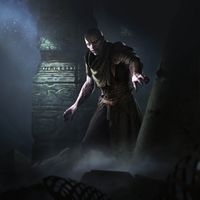
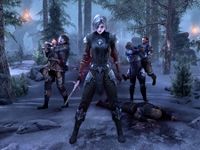
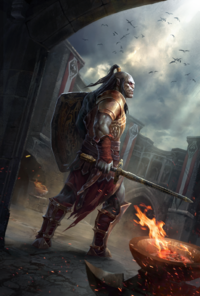
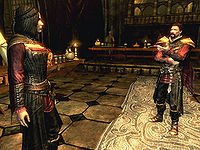
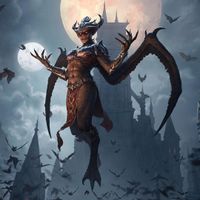
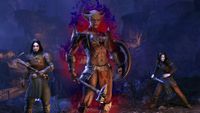
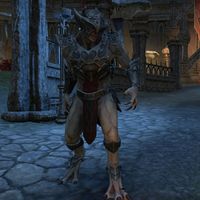



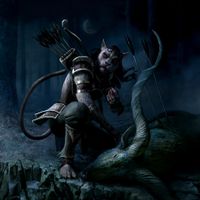
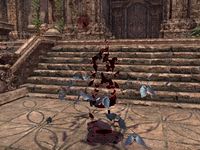
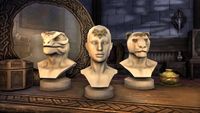
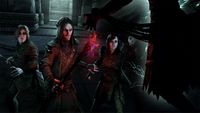

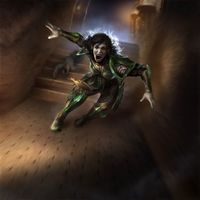
.jpg/200px-SR-quest-Dawnguard_(quest).jpg)
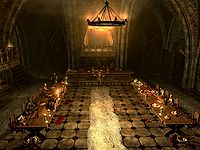
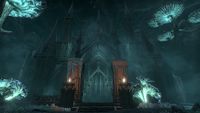
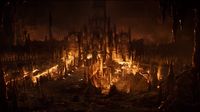
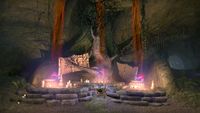
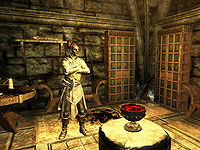


.png/106px-DF-npc-Vampire_(male).png)
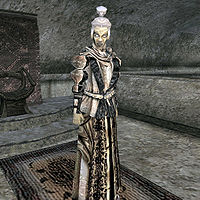
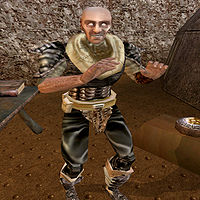

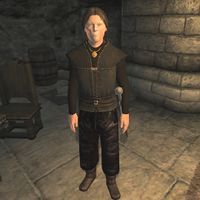
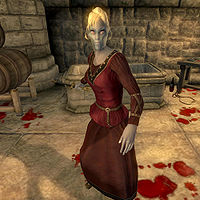
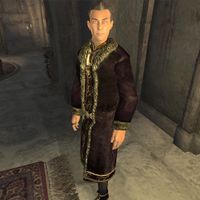
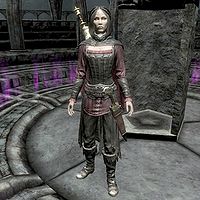
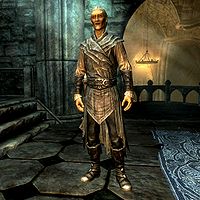
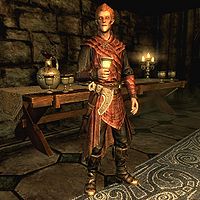
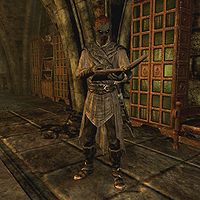
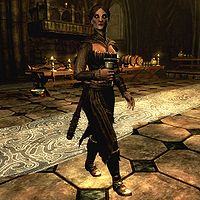
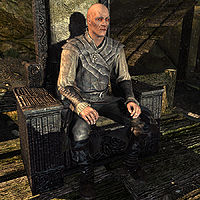
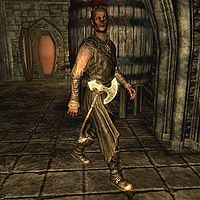
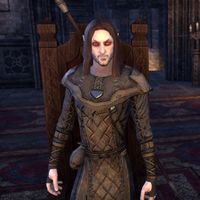
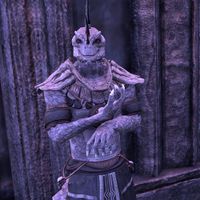

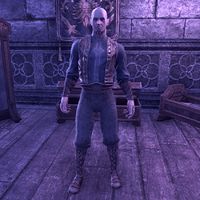
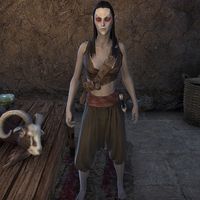
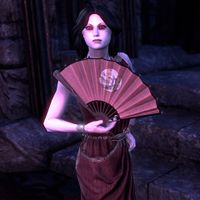
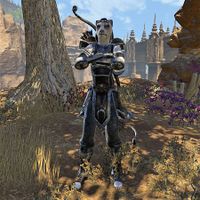

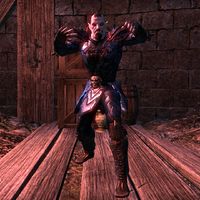
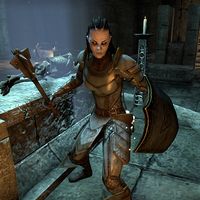
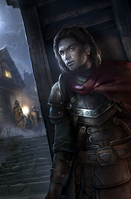
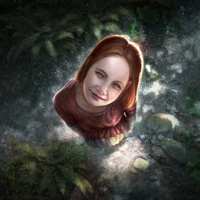
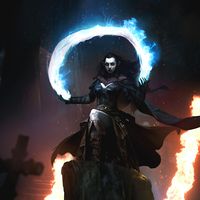
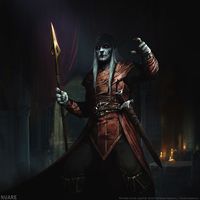
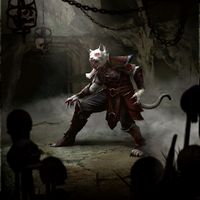
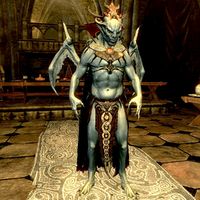
.jpg/200px-SR-skill-Vampire_Lord_(Female).jpg)
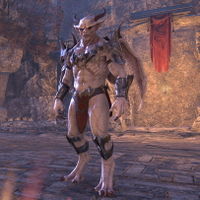
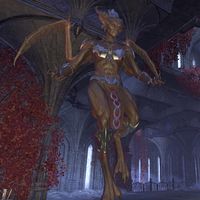
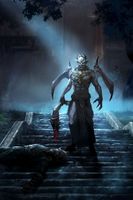
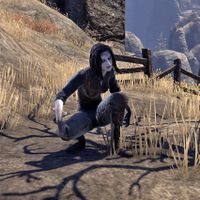
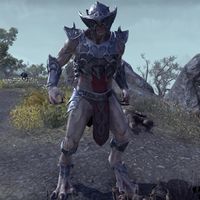
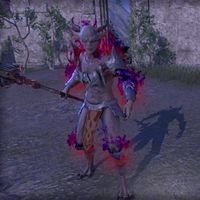
.jpg/200px-ON-npc-Harrowfiend_(Western_Skyrim).jpg)
